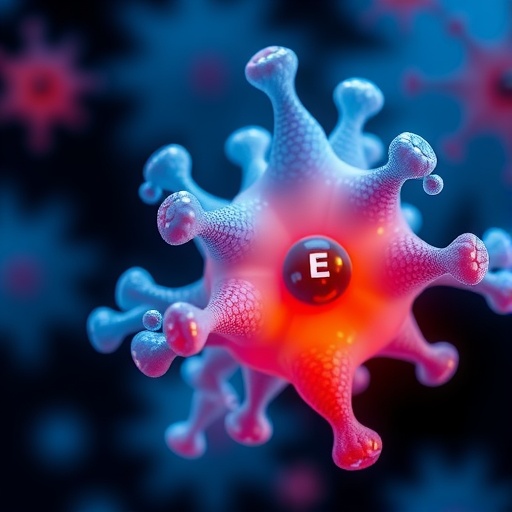Metastasis—the spread of cancer cells from a primary tumor to distant organs—is the principal cause behind over 90% of cancer-related mortality worldwide. Central to this insidious process are circulating tumor cells (CTCs), which detach from the primary malignancy and invade the bloodstream, thereby navigating a hostile circulatory microenvironment. These rare cells embark on a perilous journey, braving immune surveillance, mechanical shear forces, and apoptotic triggers to establish secondary colonies. Their survival during systemic transit is not mere chance but a sophisticated orchestration of cellular and molecular defenses that remain an intense focus of contemporary oncology research.
A groundbreaking review, recently published in the Chinese Medical Journal on August 8, 2025, sheds illuminating light on the multifaceted immune evasion strategies employed by CTCs during their circulation. Spearheaded by Xiaowei Liu and colleagues at the Institute for Breast Health Medicine, State Key Laboratory of Biotherapy, West China Hospital, Sichuan University, this article delves into the dynamic crosstalk between CTCs and the host immune system. It underscores how CTCs manipulate their microenvironment to escape immune eradication, thus propelling metastatic dissemination.
CTCs do not circulate as isolated entities. Instead, they intricately engage with diverse blood components—including platelets, natural killer (NK) cells, T lymphocytes, neutrophils, macrophages, myeloid-derived suppressor cells (MDSCs), and endothelial cells—to sculpt a niche favorable for their persistence. Platelets, in particular, cloak CTCs, shielding them from cytotoxic immune cells and facilitating endothelial adhesion at distant sites. This cellular entourage not only camouflages CTCs but actively modulates immune signaling pathways, fostering a microenvironment conducive to metastasis.
At the molecular frontier, CTCs deploy an arsenal of immune checkpoint ligands such as programmed death-ligand 1 (PD-L1), cluster of differentiation 47 (CD47), and human leukocyte antigen-E (HLA-E). These molecules interact with receptors on immune effector cells, effectively silencing cytotoxic responses. Concurrently, CTCs downregulate classical major histocompatibility complex class I (MHC-I) molecules, impairing antigen presentation and thwarting recognition by cytotoxic T cells. This dual modulation profoundly compromises immune detection and elimination.
A notable immune escape mechanism involves resistance to Fas-mediated apoptosis, a pathway typically activated when immune cells engage potential targets. By circumventing this apoptotic trigger, CTCs enhance their survival odds within the circulation. Furthermore, the formation of multicellular clusters—aggregates of CTCs often bound together with platelets or immune cells—provides a physical barrier against immune assault and mechanical stress. These clusters exhibit heightened metastatic potential compared to single CTCs, as they resist anoikis, the programmed cell death induced by detachment from the extracellular matrix.
Intriguingly, endocytosis of platelets by CTCs enables acquisition of platelet-derived proteins and transcripts, further amplifying their immune-evasive properties. This phenomenon bestows CTCs with a dynamic repertoire of immune-modulating factors, effectively cloaking them in ‘self’ signals that deter immune-mediated clearance. Simultaneously, interactions with neutrophils can lead to the formation of neutrophil extracellular traps (NETs), which paradoxically may aid in CTC arrest and subsequent extravasation into target organs.
The review emphasizes the potential clinical implications of these insights. Targeting platelet-CTC interactions through anti-platelet therapies could unmask CTCs to immune recognition, enabling their clearance. Likewise, immune checkpoint inhibitors—currently revolutionary in cancer therapy—emerge as promising agents to disrupt CTC immune evasion. Molecular targeted therapies aimed at modulating MHC expression or blocking survival pathways activated in CTCs present additional therapeutic avenues. Moreover, agents disrupting CTC clusters could reduce metastatic efficiency, offering a novel strategy in curtailing cancer spread.
Beyond therapeutic prospects, the evolving understanding of CTC biology positions these cells as valuable biomarkers in liquid biopsy. Their dynamic molecular profiles provide real-time insights into tumor evolution, treatment resistance, and metastatic potential. By integrating CTC analysis into clinical workflows, oncologists can refine prognostication and personalize therapy, improving patient outcomes.
This comprehensive exploration into the interplay between CTCs and the immune system enriches our understanding of metastasis, historically one of the most enigmatic and lethal facets of cancer. The findings highlight an intricate dance of immune suppression, cellular alliances, and molecular subterfuge by CTCs, underscoring the complexity of metastatic colonization. As researchers continue to unravel these mechanisms, the prospect of translating this knowledge into effective anti-metastatic interventions becomes increasingly tangible.
Xiaowei Liu and the research team’s contribution marks a significant leap in oncology, bridging mechanistic insights with clinical relevance. Their elucidation of the immune strategies employed by CTCs paves the way for innovative treatments that could ultimately thwart the metastatic cascade, transforming cancer from a fatal disease into a manageable condition.
Future research inspired by this review is poised to delve deeper into the molecular dialogues between CTCs and immune and blood cells, aiming to identify novel targets and biomarkers. Such work promises to accelerate the development of therapies that dismantle the protective niches CTCs construct, restoring the efficacy of immune surveillance and preventing the lethal spread of cancer.
In the relentless battle against cancer, understanding the microenvironmental crosstalk and immune evasion tactics of circulating tumor cells offers a beacon of hope. As science advances, targeting these elusive cells could herald a new era in oncology—one where metastasis is no longer a death sentence but a condition amenable to precise and effective intervention.
Subject of Research: Cells
Article Title: Microenvironment crosstalk and immune evasion of circulating tumor cells: From mechanism to clinical significance
News Publication Date: 8-Aug-2025
Web References: DOI 10.1097/CM9.0000000000003738
Image Credits: Xiaowei Liu from Institute for Breast Health Medicine, State Key Laboratory of Biotherapy, West China Hospital, Sichuan University, China
Keywords: Health and medicine, Cell biology, Life sciences, Tumor cells, Diseases and disorders, Cancer research, Clinical research, Medical treatments, Cancer treatments, Cancer immunotherapy, Immune system, Immunology, Adaptive immune system
Tags: blood components in cancer progressioncancer metastasis mechanismscancer mortality and metastasisChinese Medical Journal cancer researchcirculating tumor cells immune evasion strategieshost microenvironment manipulation by CTCsimmune response to tumor cellsimmune system interaction with CTCsmetastatic cancer research developmentsrecent studies in oncologyrole of immune surveillance in cancersignificance of circulating tumor cells





